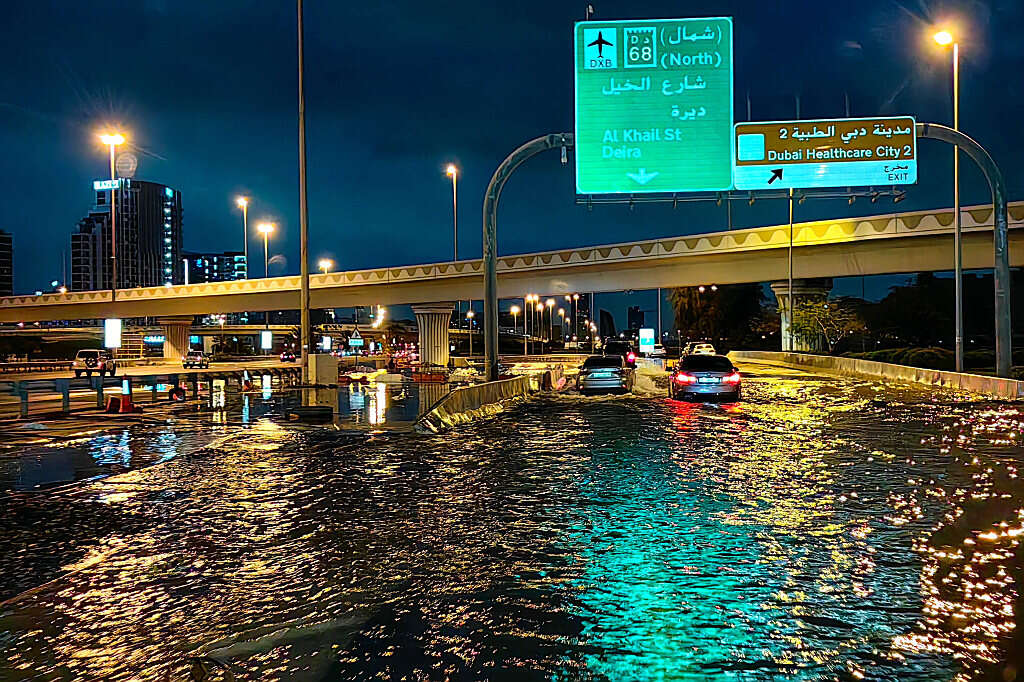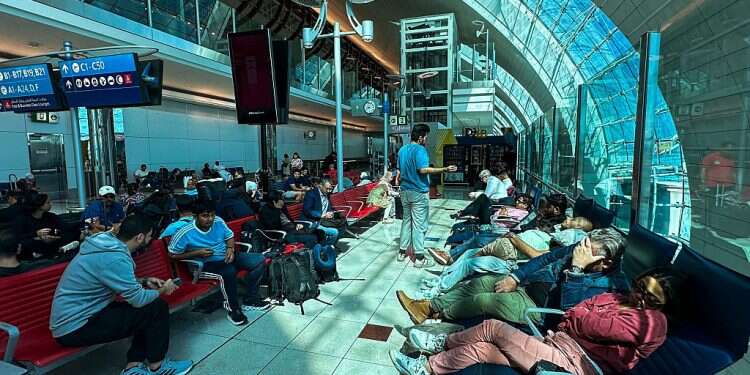The desert nation of the United Arab Emirates (UAE) found itself in an unprecedented situation on Wednesday, attempting to recover from the heaviest rainfall ever recorded in the country. This historic weather event, as described by the state-run WAM news agency, surpassed "anything documented since the start of data collection in 1949".
The deluge primarily impacted Dubai, where the city's international airport, a hub for the long-haul carrier Emirates, was inundated with floodwaters. The rains began late Monday, soaking the sands and roadways of Dubai with 20 millimeters (0.79 inches) of rain, according to meteorological data collected at the airport. However, the situation intensified around 9 a.m. local time on Tuesday, with the storms continuing throughout the day, dumping more than 142 millimeters (5.59 inches) of rainfall onto the overwhelmed city within 24 hours.
Video: Arab social media
At Dubai International Airport, standing water lapped on taxiways as aircraft landed, forcing authorities to halt arrivals. Passengers struggled to reach terminals through the floodwater covering surrounding roads. One couple, who spoke to the AP on condition of anonymity, described the situation at the airport as "absolute carnage," with people sleeping in the Metro station and the airport itself due to the lack of transportation options.
The airport acknowledged on Wednesday morning that the flooding had left "limited transportation options" and affected flights as aircraft crews couldn't reach the airfield. "Recovery will take some time," the airport said on the social platform X. "We thank you for your patience and understanding while we work through these challenges."

The Sharjah-based UAE carrier Air Arabia has suspended check-in for both inbound and outbound flights until Apr. 18 due to the weather's severe impact.
Paul Griffiths, the airport's CEO, acknowledged continued issues with flooding, saying every place an aircraft could be safely parked was taken. Some aircraft had been diverted to Al Maktoum International Airport at Dubai World Central, the city-state's second airfield. "It remains an incredibly challenging time. In living memory, I don't think anyone has ever seen conditions like it," Griffiths told the state-owned talk radio station Dubai Eye. "We are in uncharted territory, but I can assure everyone we are working as hard as we possibly can to make sure our customers and staff are looked after."
The rains were not limited to Dubai, as precipitation was also reported in Bahrain, Oman, Qatar, and Saudi Arabia. However, the UAE was particularly affected, with one potential contributing factor being "cloud seeding," a process in which the government flies small planes through clouds, burning special salt flares to increase precipitation.

While rain is unusual in the UAE, an arid Arabian Peninsula nation, it occurs periodically during the cooler winter months. However, many roads and other areas lack proper drainage due to the lack of regular rainfall, leading to flooding. Authorities sent tanker trucks to pump away the water, and some residents had to bail out their flooded homes. As of now, authorities canceled school and instructed citizens to work from home. The government offered no overall damage or injury information, but in Ras al-Khaimah, the northernmost emirate, police reported that a 70-year-old man died when his vehicle was swept away by floodwater.
In neighboring Oman, a sultanate on the eastern edge of the Arabian Peninsula, the situation was equally dire, with at least 19 people killed in heavy rains in recent days, according to a statement from the country's National Committee for Emergency Management. Tragically, this figure includes 10 schoolchildren and an adult who were swept away in a vehicle, prompting condolences from rulers across the region.




